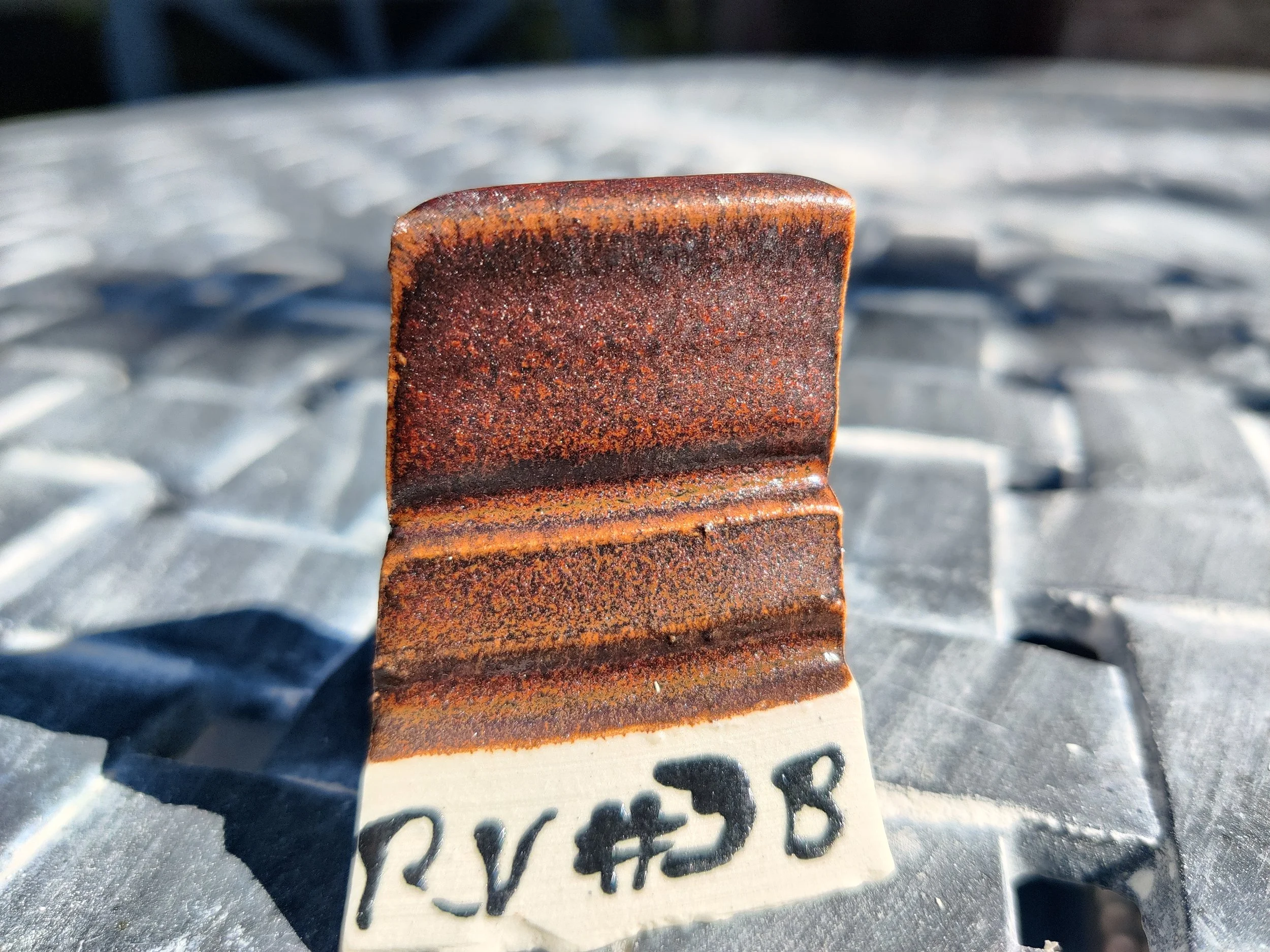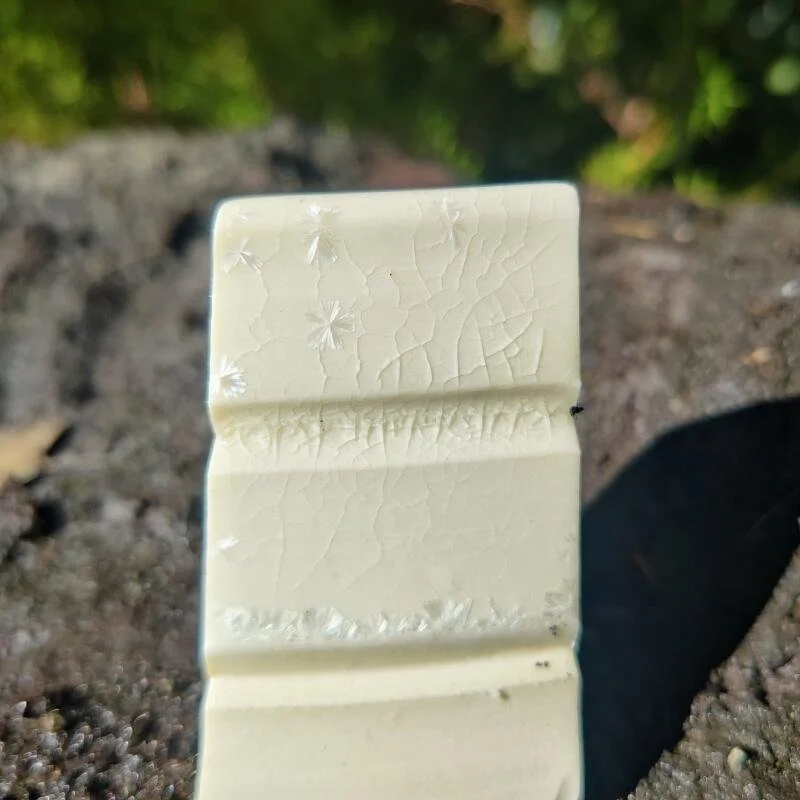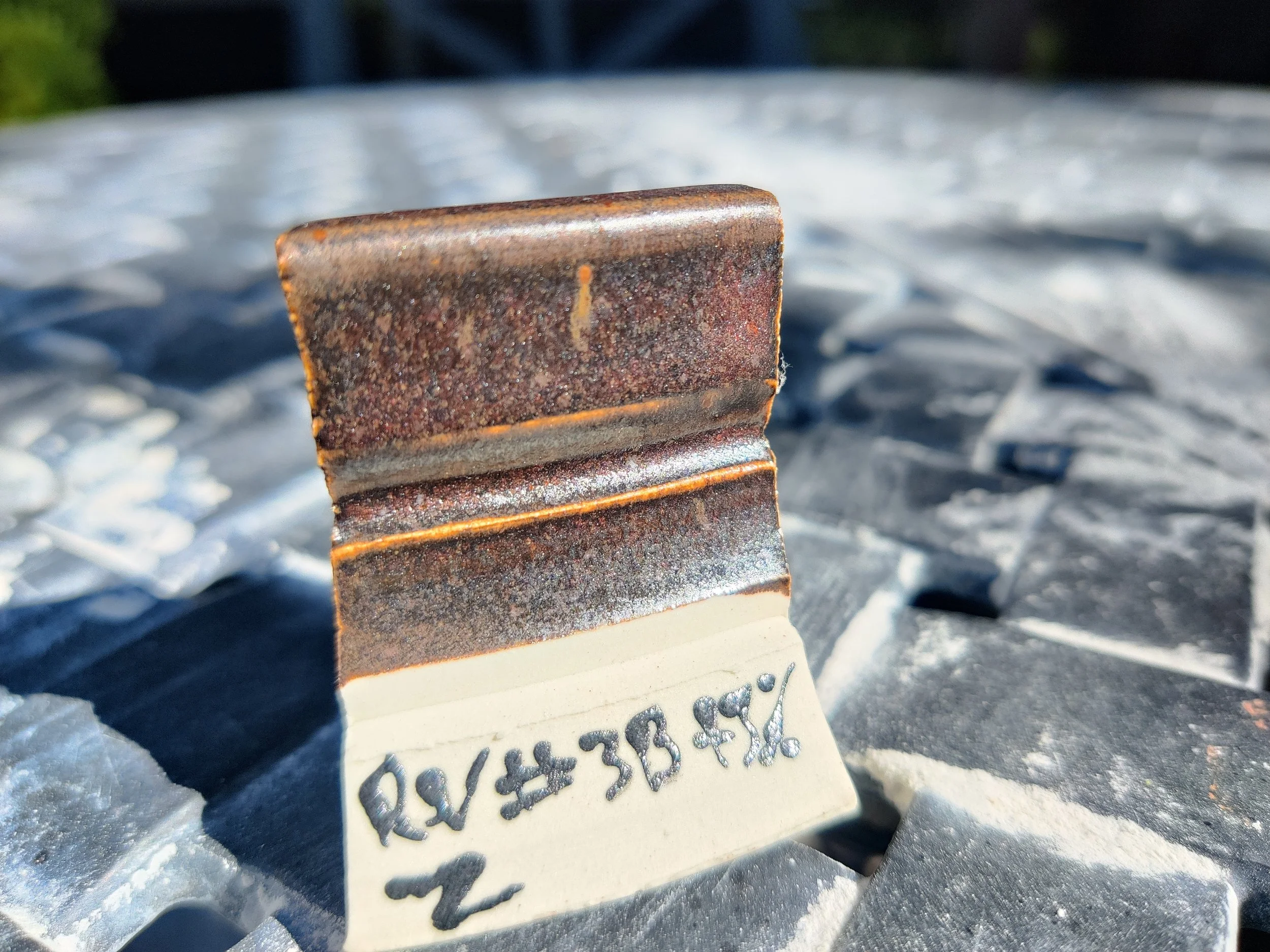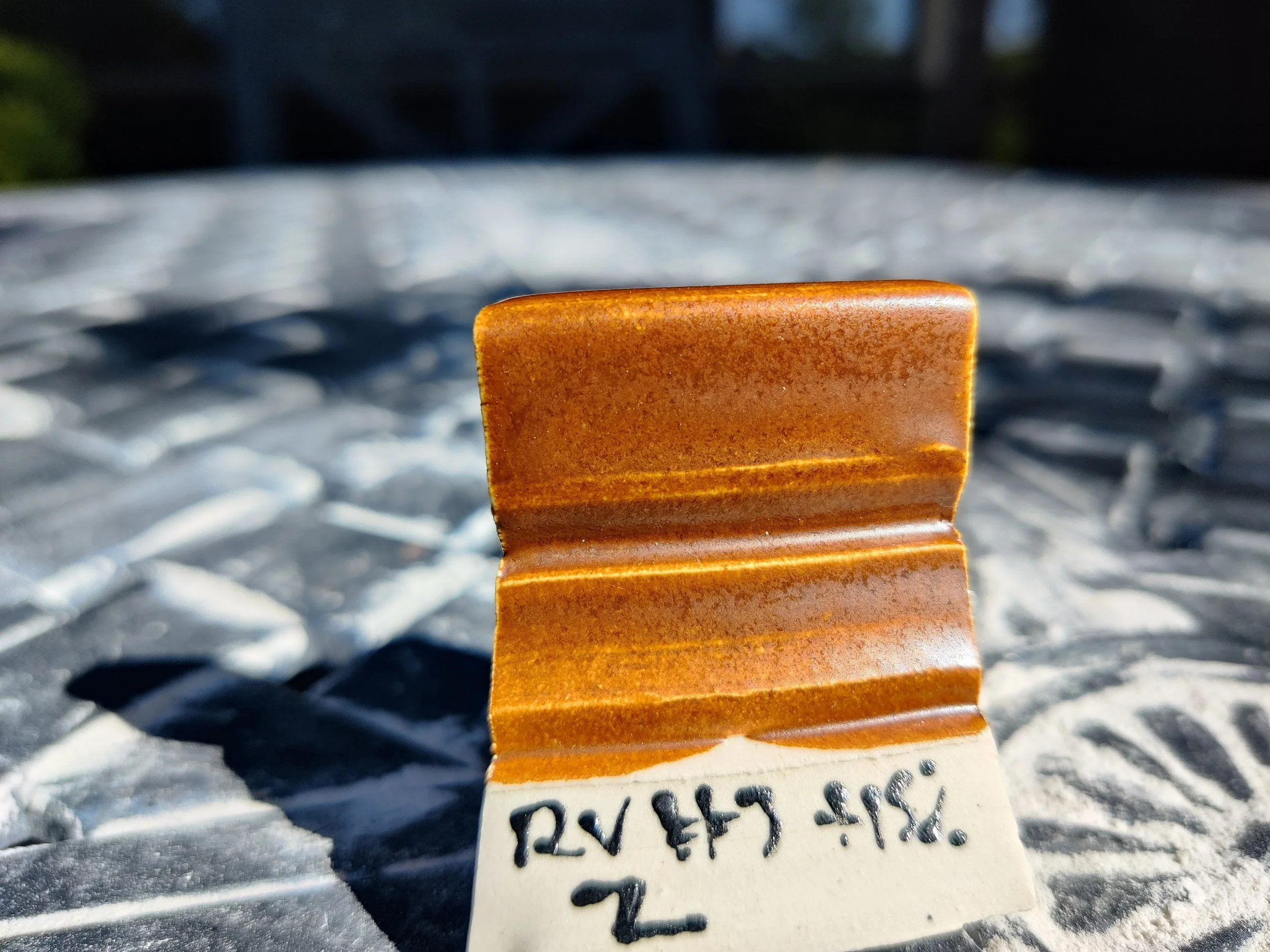Strong arming zinc (It didn't work)
I know this might be a little bit of a “ no duh” moment, but, i’m slowly learning the limits of zinc as it applies to opacity. Zinc at a certain percentage not only helps crystal glazes but it also changes glazes that have more of a Matt look (more alumina) at about 4-5%. it often starts turning it more white and less clear, I.E more opaque. Usually High levels of zinc in a glaze with low alumina and low silica would result in a crystal glaze. Doing my line tests for a Matt red glaze this becomes very apparent. The three next pictures you’ll see are a line test with zinc.
This is a high alumina / Matt base I made with no zinc. Essentially just iron and an alumina base. Fired at cone 6 ox on a b-mix test tile.
It has
0.39 Al2O3
1.69 SiO2
Note: there will almost always be less alumina than silica in a recipe because alumina is so hard to melt in comparison to silica. So the Molar amounts of Alumina in a usual recipe will be something like 0.25 Al203 (Alumina) with something like 2.0 Si02 (Silica). The more Alumina, the more Matt a glaze will usually be in ratio to the silica. This is high in the alumina level. For example the recipe has 28% Epk (a good alumina supplier to a recipe) and 8% silica.
Crystal glazes often have far less alumina and silica than the normal glaze. For example this tester crystal glaze has
0.05 Al2O3
1.75 SiO2
See how much alumina is in this crystal glaze vs the Matt glaze from before? The little bursts of “crystals” your seeing in the glaze are really just bursts of zinc made easily seen by the low amounts of silica and alumina. This glaze has 22% Zinc oxide in it. I wanted to see if I could strong arm these little bursts of crystals by dumping a line test of zinc in the original matt glaze recipe above.
Same base recipe but with 3% zinc added in. Fired at cone 6 ox on a b-mix test tile.
Same base recipe but with 8% zinc ox. Fired at cone 6 oxidation on a b-mix test tile.
The interesting part here is from 3 to 8% the color getting more white is very obvious. You can see the zinc making a shield of white to block out color where it’s not making color. Most of the time putting a high level of zinc (not that this is) in low alumina glazes would result in some type of crystal formation. But here its just blocking out any color.
Now here is the kicker - Same glaze with 15% zinc. b-mix with grog test tile fired at cone 6 ox
Same base glaze but with 15% zinc ox. Look at the difference between the first and last tile. All from zinc. You can see the zinc on the top of the glaze resulting in the color quality. Just….. deflecting the crap out of any light like a shot gun. You can see instead of the Zinc being exposed to enough heat to burst into little crystals it just melts into the glaze making an opaque coat and diminishing color along the way.
This to me at least is a insane change for an increasing amount of one mineral. Especially with direct sunlight you can really see the zinc making the glaze more opaque over time. I have read about this happening on digital fire but to someone like me who really needs to experience things for them to cement as fact, this is major.







